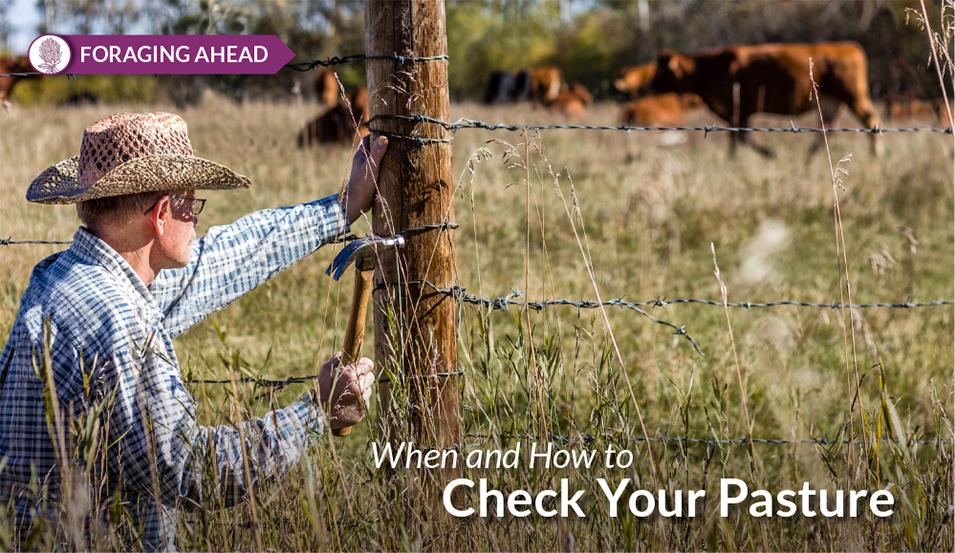
How many times have you heard a cattleman make a statement like, “Well, I think I’ll go check the cows,” or “I try to check my cows at least once a day,” or something similar? Or maybe they begin a statement with the phrase, “When I was checking the cows. . . . ”
It is important to “check the cows.” But how often do you hear a phrase such as the ones above in which the word “pastures” has replaced the word “cows?” Most folks would probably say that they check their pastures while they are checking their cows, which is probably true.
Nonetheless, lack of specific mention of checking pastures may reveal something about attitudes that livestock producers in the U.S. have toward pastures. In New Zealand, where animal production from pasture is perhaps the most efficient in the world, mention of checking pastures is common. In fact, most beef producers in that country would be more likely to refer to themselves as forage farmers than as cattle producers.
What to check
So what does a person need to look at in their pastures, anyway? Furthermore, how often and how closely does he (or she) need to look at them? The answers to these questions depend on the type of operation, stocking rate, and how intensively a producer wants to manage.
In a low-management operation where continuous grazing is used, pasture monitoring can be kept simple and done relatively infrequently. Make sure the fences are not damaged, keep an eye out for serious weed encroachment or other pest problems, and make certain that there is enough forage present for the animals for the immediate future.

Periodic observation of weeds and fences is always advisable, but as stocking rate increases and production is intensified, pastures need to be monitored with increasing frequency. When a producer uses rotational stocking, determining when to move animals to a new pasture is an important decision that involves several considerations. These include the amount of pasture forage in the field in which the animals are at present, the amount of forage accumulation in the next pasture, and the time of the year (which affects how quickly pasture forage is likely to re-grow).

Maximize opportunities, minimize problems
When grazing management is intensified, more thought, time, and decision-making is required. However, by intensifying management, a producer can more easily take advantage of opportunities or minimize problems that are likely to affect the pastures and/or the animals. This includes use of available forage, avoidance of overgrazing, botanical composition, vigor of the pasture plants, evenness of nutrient recycling and overall forage quality. Animal performance tends to increase in proportion to the extent to which these factors are dealt with.
In order for there to be efficient and cost-effective production, both the pasture plants and the animals require observation, thought and periodic timely action. Therefore, it is just as important to check the pastures as it is to check the animals. The more intensive the operation, the truer this statement becomes. When a producer recognizes what is happening with pastures, he or she can anticipate, and correct or at least mitigate effects from, a problem before it has a serious impact.
Foraging Ahead is a bi-weekly column presented by Ragan & Massey and written by Dr. Don Ball, Professor Emeritus at Auburn University. Dr. Ball is one of the authors of the popular book, “Southern Forages,” available here.
Follow Ragan & Massey!
Be sure to follow Ragan & Massey on Facebook for daily updates, and check back here every week for more in-depth expertise, advice and product updates.
